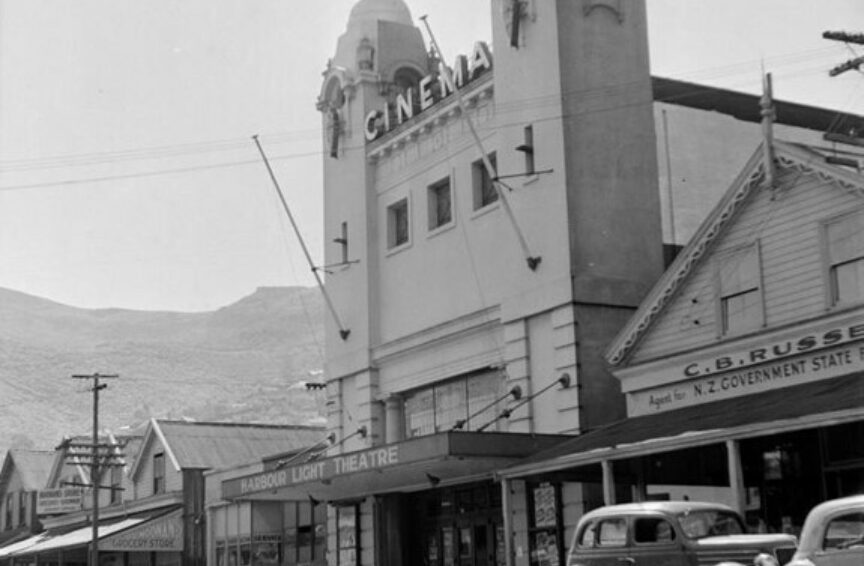PO Box 95
Lyttelton 8841
Te Ūaka recognises Te Hapū o Ngāti Wheke as Mana Whenua and Mana Moana for Te Whakaraupō / Lyttelton Harbour.
Back to the Future of Electric Rail
The Lyttelton rail line, connecting the port town of Ōhinehou Lyttelton with the city of Ōtautahi Christchurch in Aotearoa New Zealand, has a long and varied history. The 2.6 km Moorhouse (later Lyttelton) Rail Tunnel through the Port Hills was opened in 1867 and served as a critically important conduit for both passenger and freight trains from the volcanic harbour of Whakaraupō through to the Waitaha Canterbury plains.
In the early days of the Lyttelton line, steam locomotives powered by coal were the primary means of traction and ushered in an era of exponential growth through the late 1800s for both the port town, its city, and the wider Canterbury region. However, Victorian steam technology was not without its challenges. Coal-burning steam locomotives produced large amounts of smoke and soot, which would accumulate in the Lyttelton Tunnel. The growth in the use of the line led to reduced visibility, increasing breathing difficulties for passengers and crews alike, and public criticism of the outdated ‘smoke and dirt service’. By the early 1920s, with the growing population, a solution was needed to mitigate these issues.
In 1925, the Minister of Railways, Gordon Coates, commissioned the English consultancy of Merz & McLellan to investigate the potential for electrification of the suburban networks in Auckland, Wellington, Christchurch, and Dunedin. The report concluded that, given the high volume of traffic and the unique challenges of the Lyttelton Tunnel, the Christchurch-Lyttelton line was a prime candidate for electrification. Previously, in 1923, the English Electric Company had constructed the EO class electric locomotives operating on the Otira section of the Midland line in Te Waipounamu South Island, which included the Otira Tunnel. Similar to the situation with the Lyttelton Tunnel, the smoke from steam locomotives was a significant issue which led to the decision to electrify the line.
After this successful outcome, English Electric was entrusted with building the new electric locomotives for the 3ft 6in (1,067 mm) narrow gauge Lyttelton line. Six EC class locomotives were constructed at the Dick Kerr works in Lancashire in 1928, bearing numbers EC7 to EC12. Mechanically, they were similar to the earlier EO class but they were designed with longer bogies, higher gearing for a top speed of 85 km/h, and more powerful 1,188 hp (888 kW) motors. Their 50 tonne adhesive/gross weight was especially efficient in the 1-in-150 slope (0.67% gradient) of the tunnel ascent from the port.
The electric rail service was inaugurated on 14 February 1929 by the Minister for Railways W.B. Taverner at Christchurch Railway Station. The assembled crowd cheered as the first electric locomotive left for the Lyttelton Railway Station pulling a fully loaded train of ‘Midland red’ passenger carriages. ‘Juiced’ through 250 tons of overhead copper lines between the city and port – powered by the Lake Coleridge hydroelectric station via the new Woolston substation delivering 1,500 volts DC at 900 amps – the EC class locomotives capably handled all freight and passenger duties from Christchurch to Lyttelton. Pulling freight trains of up to 610 tonnes and passenger trains, including the Boat Train, up to 406 tonnes, the service ushered in a new modern era of clean electric travel.
By 1967, after almost four decades in service, the EC class locomotive fleet was nearing the end of its serviceable life. Operational and maintenance costs, coupled with drainage work near the Woolston substation, led to the decision to decommission the electric locomotives and replace them with more modern diesel counterparts. This change marked the end of the electric era on the Lyttelton line, with the last electric train making its journey on 18 September 1970.
While EC8 to 12 were scrapped, EC7 was selected for preservation, with the Ferrymead-based Canterbury Railway Society taking custody of the locomotive in February 1972. EC7 became the first operating heritage electric locomotive in New Zealand when Ferrymead’s heritage railway, the country’s first rail line, was electrified in November 1988. EC7 still loads passengers in the same red carriages at the Ferrymead Park’s Moorhouse Station to this day.
The story of the EC class locomotives and the electrification of the Lyttelton line is a testament to the constant evolution of railway technology. The shift from Victorian era steam to electric power was a significant move that improved efficiency, safety, and comfort for both passengers and crew. Likewise, the transition to diesel locomotives marked yet another important milestone in the history of the Lyttelton line reflecting the broader changes in railway technology and economics through the later 20th century.
In this 21st century, there is a renewed interest in electric rail, driven in large part by environmental concerns about climate change and increasing air pollution associated with the use of non-renewable fossil fuels. Electric trains, especially those powered by renewable sources like hydro or geothermal energy, emit far fewer greenhouse gases and pollutants than their diesel counterparts, and Aotearoa New Zealand, with its abundant renewable energy resources, is well-positioned to take advantage of this trend. Whether tomorrow’s electric locomotives are powered by overhead wires or third-rail systems – or new technologies such as battery-powered trains and hydrogen fuel cells – it is quite possible we will be going back to the future of electric rail.
See also Philip Wrigley, Non-steam Locomotives of New Zealand, 2015.

